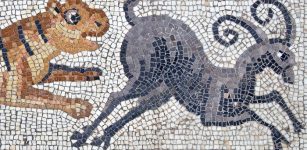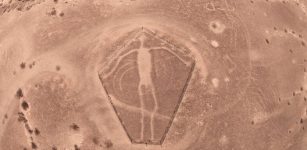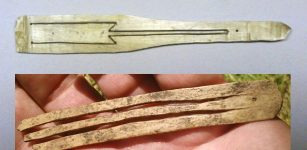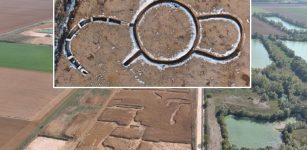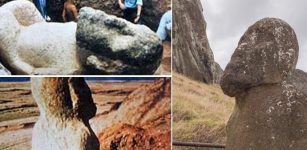World’s Oldest Lunisolar Calendar May Have Been Discovered At Göbekli Tepe, Turkey
Conny Waters - AncientPages.com - According to expert analysis, the archaeological site of Göbekli Tepe in southern Turkey, dating back approximately 12,000 years, has yielded evidence of what may be the world's oldest lunisolar calendar. This discovery is considered a commemorative artifact related to a significant comet impact.
Göbekli Tepe. Credit: Teomancimit - CC BY-SA 3.0
The site, featuring temple-like structures adorned with intricate symbolic carvings, potentially holds records of astronomical observations that may have influenced a pivotal transition in human civilization. Researchers suggest that the ancient inhabitants developed the ability to document celestial observations, creating a solar calendar to keep track of time and mark the change of seasons.
A recent study revealed that V-shaped engravings on the site's pillars may each represent a single day. This interpretation led researchers to identify a 365-day solar calendar on one pillar, consisting of 12 lunar months with an additional 11 days. The summer solstice appears to be distinctly represented by a V-shaped marking on the neck of a bird-like creature, potentially symbolizing the summer solstice constellation of that era. Similar V-markings on nearby statues' necks may represent deities.
Incorporating lunar and solar cycles in these carvings suggests this may be the earliest known example of a lunisolar calendar, predating other documented calendars of this type by several millennia. This calendar system is based on the moon's phases and the sun's position.
Recent research suggests that the ancient carvings at Göbekli Tepe may have been created to document a significant astronomical event. According to the researchers, these carvings potentially record the date of a comet fragment impact on Earth, which is estimated to have occurred approximately 13,000 years ago, or 10,850 B.C.
The hypothesized comet strike is believed to have initiated a mini Ice Age lasting over 1,200 years, resulting in the extinction of numerous large animal species. Furthermore, this event may have precipitated changes in human lifestyle and agricultural practices, which are theorized to be associated with the subsequent emergence of civilization in the fertile crescent of West Asia.
Additional evidence at the site includes a pillar that appears to depict the Taurid meteor stream, which is considered the probable source of the previously mentioned comet fragments. This celestial event is portrayed as lasting 27 days and originating from the directions of Aquarius and Pisces.
This discovery also potentially corroborates the hypothesis that ancient civilizations possessed the capability to record dates using the concept of precession—the gradual shift in Earth's rotational axis that affects the apparent movement of constellations across the celestial sphere. This ability predates Hipparchus of Ancient Greece's formal documentation of precession in 150 B.C. by at least 10,000 years.
Carvings at Göbekli Tepe are thought to represent the world's oldest calendar. Credit: Dr. Martin Sweatman
The enduring significance of these carvings to the inhabitants of Göbekli Tepe over millennia suggests that the impact event may have catalyzed the formation of a new cult or religion, potentially influencing the subsequent development of civilization.
The find also supports a theory that Earth faces increased comet strikes as its orbit crosses the path of circling comet fragments, which we normally experience as meteor streams.
See also: More Archaeology News
"It appears the inhabitants of Göbekli Tepe were keen observers of the sky, which is to be expected given their world had been devastated by a comet strike.
This event might have triggered civilization by initiating a new religion and by motivating developments in agriculture to cope with the cold climate. Possibly, their attempts to record what they saw are the first steps towards the development of writing millennia later," Dr. Martin Sweatman, of the University of Edinburgh's School of Engineering, who led the research, said.
Written by Conny Waters - AncientPages.com Staff Writer





